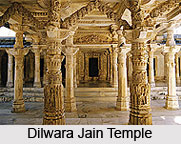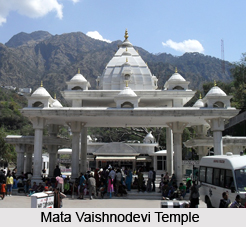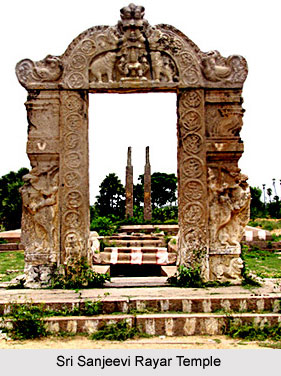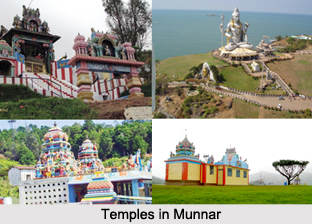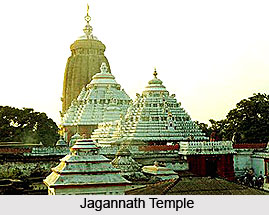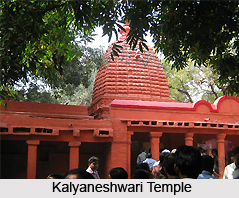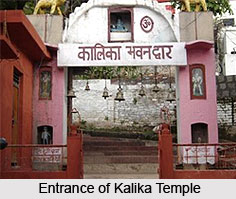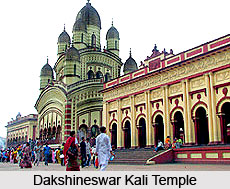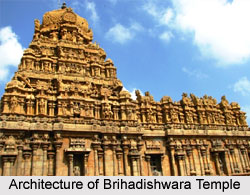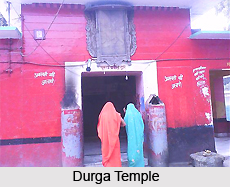 Durga Temple is a mixture of both Dravidian style architecture and northern superstructure imposed on it. A pillared corridor runs around the temple that envelops the shrine, the mukhamandapa and the sabhamandapa. The super structure is a square structure that has been built clumsily over an apsidal cella. The temple stands on a high moulded sub-base apsidal and carries a peripheral row of columns on its edge. The colonnade forms a covered circle with a sloping roof. The open mandapa is carried forward on a base which is of smaller width. The peripheral pillars of the front mandapa and those at the forward end have large statues on them. The adhishthana inside is apsidal, moulded with all the components. It carries the apsidal wall enclosing the garbhagriha and a closed maha-mandapa in front of it. It has two linear rows of four columns in each row which are divided into a central nave and lateral aisles. It seems that the shikara built was an influence from the Nagara style architecture.
Durga Temple is a mixture of both Dravidian style architecture and northern superstructure imposed on it. A pillared corridor runs around the temple that envelops the shrine, the mukhamandapa and the sabhamandapa. The super structure is a square structure that has been built clumsily over an apsidal cella. The temple stands on a high moulded sub-base apsidal and carries a peripheral row of columns on its edge. The colonnade forms a covered circle with a sloping roof. The open mandapa is carried forward on a base which is of smaller width. The peripheral pillars of the front mandapa and those at the forward end have large statues on them. The adhishthana inside is apsidal, moulded with all the components. It carries the apsidal wall enclosing the garbhagriha and a closed maha-mandapa in front of it. It has two linear rows of four columns in each row which are divided into a central nave and lateral aisles. It seems that the shikara built was an influence from the Nagara style architecture.
The central nave has a higher flat roof that is raised over a sort of clearstory in front of the cella-entrance. Two lateral aisles have sloping roofs which are at a smaller height than the central roof. The aisles of the maha-mandapa are continuous on either side which has a closed inner circumambulatory. The adhishthana is projected forward into the porch. The reliefs on the adhishthana and outer wall are cantoned by pilasters and enclose niches. These are framed by shrine of all the patterns of northern and southern vimanas, kuta, sala, panjara, udgama. They also consist of bold structures. Above the inner wall rose the original apsidal griha and sikhara.
The temple possesses advanced features. The style of its sculpture, its diverse corbel-forms and water-spout make it a structure of the eighth century. The inscription of Chalukya Vikramaditya II (733-46) on the ruined gopura at the south-eastern part of the enclosing-wall also indicates this. This temple resembles a Buddhist chaitanya temple. The outer walls of the temple have convoluted carved figures of Narasimha, Mahishasuramardini, Varaha and Lord Vishnu and so on.
However this temple is not dedicated to Goddess Durga as the name suggests. It is believed till early twentieth century this temple formed part of a fortification of Durga of the Marathas.












